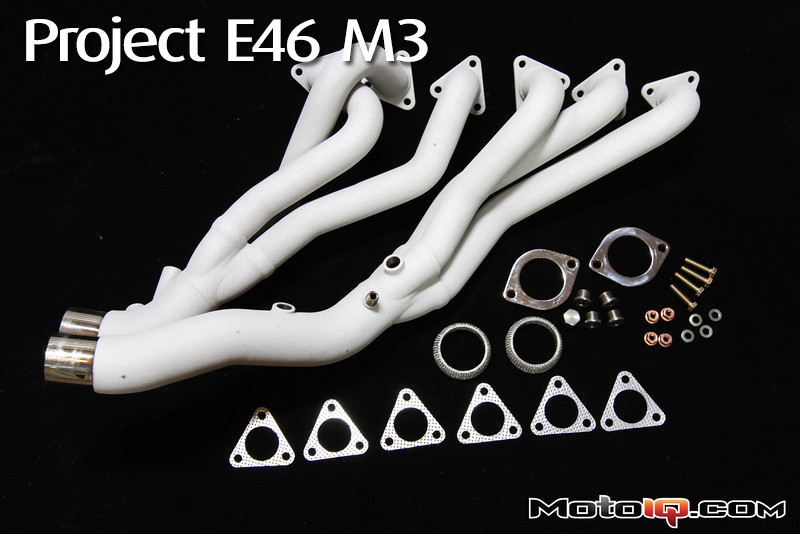,
 Here’s a look at the factory headers. Notice they are more of a “shorty” version when compared to the Fabspeed/VAC headers with longer, pre-collector piping. The longer piping should free up more top end power, while the removal of the cats should help throughout the entire rev range.
Here’s a look at the factory headers. Notice they are more of a “shorty” version when compared to the Fabspeed/VAC headers with longer, pre-collector piping. The longer piping should free up more top end power, while the removal of the cats should help throughout the entire rev range.
 Here we see two of the factory oxygen sensors reconnected, along with the factory EGT sensor, in the provisions provided.
Here we see two of the factory oxygen sensors reconnected, along with the factory EGT sensor, in the provisions provided.
 Not only do the headers fit well, but the exit piping connects to either a stock or aftermarket Section 1, which we have kept stock for now. These headers net a 5lb weight savings over stock as well.
Not only do the headers fit well, but the exit piping connects to either a stock or aftermarket Section 1, which we have kept stock for now. These headers net a 5lb weight savings over stock as well.

Here's a glance at the Corsa system installed from underneath, which is an angle we didn't get to show you in Part 2. Unfortunately the other racks at MKC were tied up with cars and the four-point dyno lift was the only one available at the time of the picture. So, please excuse the yellow bar.

On Modified by KC's Dynojet 424x the headers alone provided a noticeable gain both down low and up top. In the graph the car still retains Epic’s Stage 1 software tested in Part 1. Once again we apologize for the poor tach signal we’re receiving with this car, causing us to show you only horsepower, and plotting it against MPH on some of our runs.
Compared to the stock headers, with no other changes, the Fabspeed/VAC units were good for 11whp up top, as well as 9whp at a usable 3300 RPM. Although not seen here, we looked at the broken graphs and found peak torque is also up to 254.2 lb-ft. This may only be up by 2 lb-ft when compared to our previous peak right at 4200 RPM—where the car doesn’t seem to change much—but the gain down low peaks with a nice 14 lb-ft at 3300 RPM, with a noticeable average gain of 9 lb-ft between 2800-4000 RPM.



